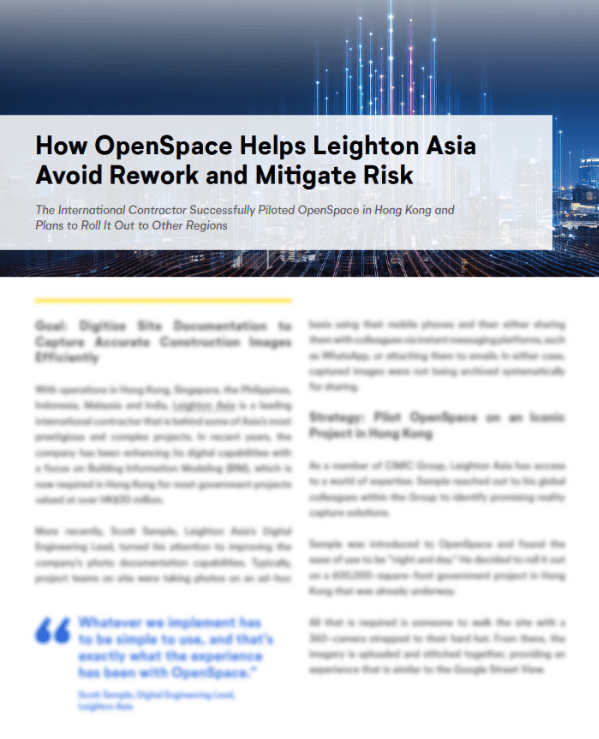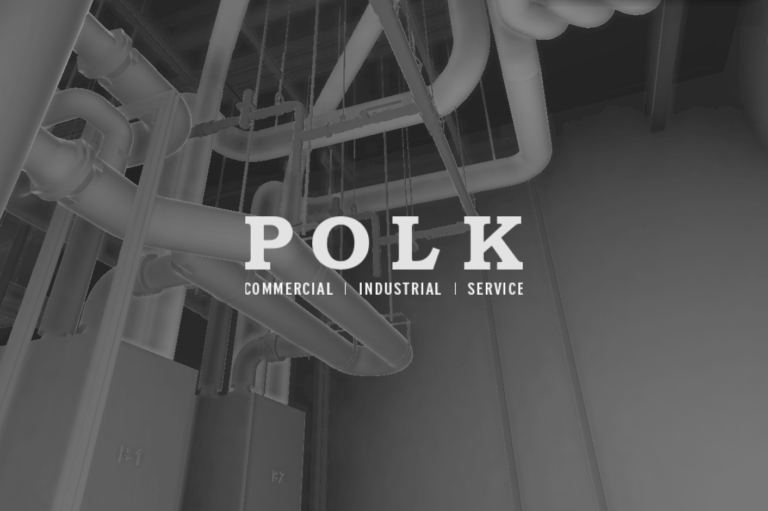How OpenSpace Helps Leighton Asia Avoid Rework and Mitigate Risk
Founded in 1975, Leighton Asia delivers high-profile infrastructure projects throughout Asia in the construction, civil engineering, MEP, and oil and gas sectors, with operations in Hong Kong, Singapore, the Philippines, Indonesia, Malaysia, and India. Its building projects range from schools, embassies, and luxury high-rise residential towers to large-scale leisure complexes.
Leighton Asia needed an automated solution to improve efficiency and collaboration. The company turned to OpenSpace to digitize its documentation process and ensure that all captured images would be archived systematically and shared more easily and consistently with project stakeholders.
Read this case study to learn how, working with OpenSpace, Leighton Asia has streamlined its documentation workflows, avoided costly rework, and enabled its project teams to work more productively and efficiently. OpenSpace has also helped keep overseas designers and subcontractors who are unable to come to Hong Kong in the loop.
Scott Semple
Digital Engineering Lead
Leighton Asia




